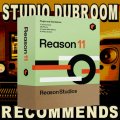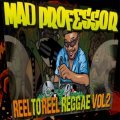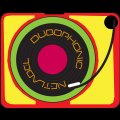| CHAPTER
2
THE RECORDING SESSION
1 Introduction:
First of all, please read the
introduction (Chapter One). In this chapter
we'll gonna see how to record your guitar
& or your bass part. Basically there are
two recording ways: with an amp or direct
thru the mixer desk. Let see those ways:
a. With an amp. That s not the cheapest
way. You need a guitar amp and or a bass amp
one or two microphones a good acoustic room
and comprehensives neighbors. Those 'amps
& mics) will cost you a lot so except
you already have them skip this way of
recording and go to the second one.
b. Direct to desk: Maybe you're thinking
I'll plug my guitar direct thru the desk.
Well, you can, but if your guitar have
passive mics (such as those described in
chapter one) you will notice, even you
adjust the channel preamp, that your sound
is quite poor and will miss dynamics.
First solution: buy a direct box, and
choose an active one. Your instrument is
unbalanced DIO output will be balanced
(prices begins 45 euros (eg behringer) and
input level will be better on the desk. They
are more sophisticated DIO such the ones
done by tech21.I mean sans amp guitar and
bass driver. Those are a mix of direct box
and preamp. DIO is the cheapest way to
direct record.
Second solution: you can record via a
preamp line out. Output will be at -10db.
Quite expensive way as guitar and bass
preamp are not the sames, and as always
goods ones aren't cheap.
Third solution: "multi effect
boxes". In this categoryI mean boxes
like pod 2 guitar and podbass or jstation or
yamaha dstomp or boss vf1 etc... You plug
your guitar or bass into the box and go to
the desk. These boxes have multi effects in
them (serial connected) so it could be a +.
But on the other side outputs are stereo
(cos of the effect) and price goes from
380to500 euros. Some of them such the boss
vf1 could be used as an classic effect unit
when not used for your guitar takes. Choice
of such boxes are a matter of taste andI
would say try (at home on your desk!) before
buying and then try to find a second hand
one.I hear some of you saying: "I have
plenty of plug-ins: why doI need external
effects? This is true and untrue in the same
time. Because most of soundcards who claims
zero latency redirect the input to the
output so you don't have effect (eg Cubase
insert) and if you go to monitor your effect
thru the host soft (eg Cubase...) even
though it could be a very low latency you
will hear some. But you can use them after
recording (we ll see that later).
3 How and What to record.
My first advice will be to record a DRY
TAKE. Why? Imagine you have done a real good
guitar take with phasing and reverb and eqs.
But when many others instruments come later
and you begin to mix you'll find it will
sound better with lees reverb or another eq.
Well you need to do your take again.TOO BAD
this one had a very special feeling. that's
why always record a dry take, you could
always change your mix as you want at
anytime. BUT you will say without effectI
miss my inspiration and it's true that
effects are part of the sound and affect the
way of playing an instrument. But don t
worry you will play with effect but don't
record them (or record on another track)
here the way to do it.
4 First solution:
Plug your guitar to your "box"
and the "box" to the mixing desk
channel one (eg) direct output of this
channel to your soundcard input one. Do your
level take. Now mute the main mix assign of
this channel. Route the channel to buss.
Direct output of the buss to your effect
unit and the unit to another channel (or use
the insert point if your buss have one)
assigning the channel(s) to main mix. Now
you hear the effect but don t record them.
If you want record they on another track
,direct out of the new channel to soundcard
input 2 for instance. There are many
solutions depend of your desk archicture.
For example instead of guitar to desk then
direct out to input soundcard, do: guitar to
desk, assign to a buss and the buss via his
direct out to the soundcard. Unassign the
buss and the guitar channel to main mix.
Direct output of guitar channel to your
effect "box" return of the
"box" (es) to another(s) desk
channel(s) assigned to main mix to hear the
effects. OR use a aux send to feed the
effect box etc, etc...I am sure that you
will find a solution with your specific
hardware but you ll need at least a mixing
desk with direct outputs on every channel
insert points busses with at least direct
output and if possible insert point and the
ability to assign them to main mix or not
(channel and busses). If you need a scheme
go to line6 website and download the pod
(guitar or bass) user manual pdf. For boxes
you can go to www.dhtraco.com/competition.html
and www.harmony-central.com
and search thru the database sansamp
directbox or effect unit for users reviews.
5 few tips: Be aware that computers
screens are your enemy! To avoid BUZZ turn
off the monitor when you record or go away
till you don t heard noise (with a
headphone!). Now go buy a infra red mouse
and computer keyboard from your preferred pc
dealer or see a good doctor and ask him to
enlarge your arm! Once your take is done,
clean it! Open your sound editor such as
Soundforge and Zoom Zoom Boy. Remove all
undesired noise by muting those as you would
do for a drum "multi" take.
Before, always cut the original take at a
entire measure to re-import without timing
problem and it somewhere to avoid mistake
before editing. Now you can apply effect
within your soft and your hardware by
sending the track to a desk channel direct
insert point effect and so on.
Last tip for today: go to your bathroom
and take an aspirin.
Good luck AUDIOFORGE
|
























